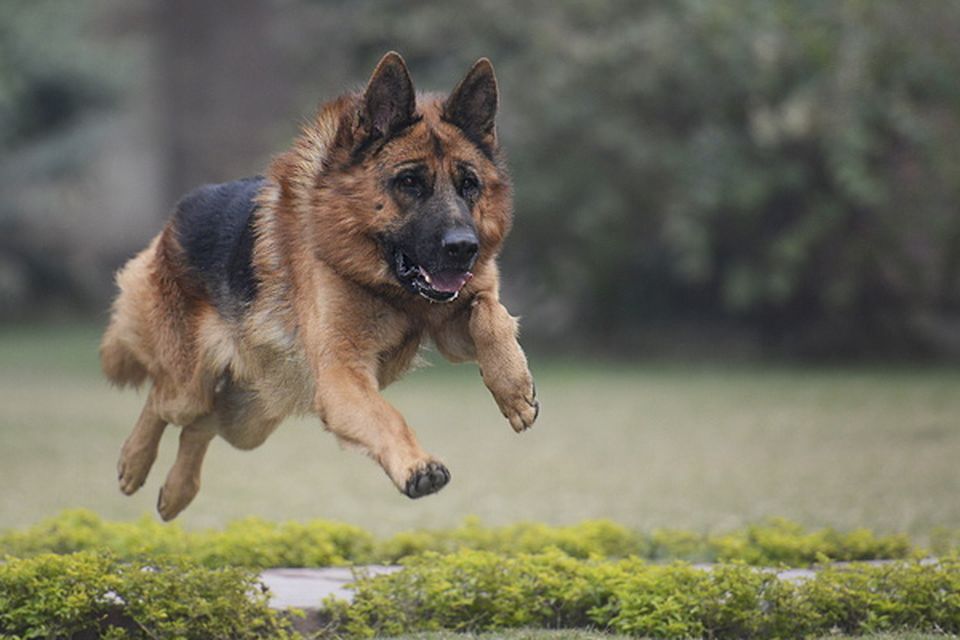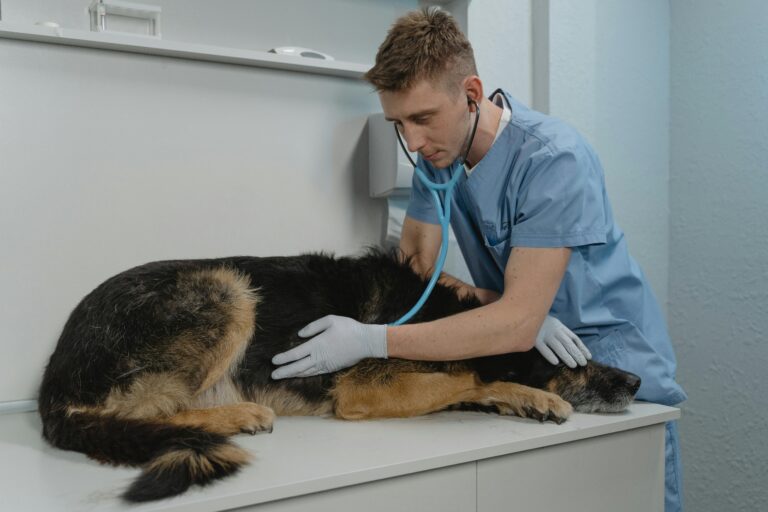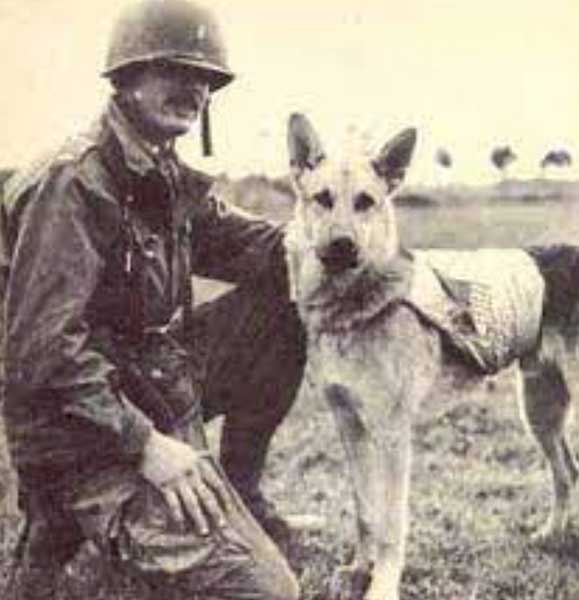Unleashing the Full Potential: Training Solutions for German Shepherds
German Shepherds: An Overview
If you are considering adding a German Shepherd to your family, it’s important to understand the characteristics and traits of this remarkable breed. Additionally, recognizing the importance of training is vital for fostering a well-behaved and balanced German Shepherd.
Characteristics and Traits of German Shepherds
German Shepherds are renowned for their intelligence, loyalty, and versatility. They are known for their strong work ethic and are often utilized in various roles such as police dogs, service animals, and search and rescue dogs. Here are some key characteristics and traits of German Shepherds:
-
Intelligence: German Shepherds are highly intelligent dogs, consistently ranking among the top breeds in terms of intelligence. This characteristic makes them quick learners, capable of grasping new commands and tasks with ease.
-
Protective Nature: German Shepherds have a natural instinct to protect their family members and territory. This protective nature makes them excellent watchdogs and loyal companions.
-
High Energy Levels: German Shepherds are an active breed that requires regular exercise to keep them physically and mentally stimulated. Engaging in activities such as daily walks, runs, or play sessions is essential to prevent boredom and potential behavior issues.
-
Strong Work Drive: German Shepherds have a strong work drive, making them highly trainable for various tasks and activities. They thrive when given a purpose and enjoy having jobs to do.
-
Bonding with Family: German Shepherds form deep bonds with their family members and are known for their loyalty and devotion. They are happiest when they can be close to their loved ones and participate in family activities.
Understanding the Importance of Training
Training is crucial for German Shepherds due to their intelligence, high energy levels, and protective nature. Proper training not only helps establish good behavior and obedience but also provides mental stimulation and helps build a strong bond between you and your German Shepherd.
Training provides German Shepherds with the skills they need to navigate the world confidently and safely. It helps them understand boundaries, reinforces positive behaviors, and discourages negative ones. Through training, you can channel their energy into productive activities and prevent potential challenges that may arise from their protective instincts.
Training also contributes to the overall well-being and happiness of your German Shepherd. It helps prevent boredom, which can lead to destructive behavior, and allows them to use their intelligence and work drive in a positive and fulfilling way.
By investing time and effort into training your German Shepherd, you will reap the rewards of a well-behaved and balanced companion. In the following sections, we will explore the training challenges specific to German Shepherds and provide solutions to help you overcome them.
Training Challenges for German Shepherds
Training a German Shepherd comes with its own set of challenges due to their unique characteristics and traits. Understanding these challenges is crucial to develop effective training strategies. Here are some common challenges you may encounter when training a German Shepherd:
High Energy Levels and Exercise Needs
German Shepherds are known for their high energy levels and require regular exercise to keep them physically and mentally stimulated. Without sufficient exercise, they may become restless and exhibit unwanted behaviors. Daily activities such as walks, runs, and play sessions are essential to help them release their energy and prevent boredom.
To address this challenge, it’s important to establish a consistent exercise routine for your German Shepherd. Consider engaging in activities that cater to their natural instincts, such as fetch, obedience training, or even agility training. You can find more information on suitable exercise routines in our article on exercise routines for your German Shepherd.
Strong Prey Drive and Potential Aggression
German Shepherds have a strong prey drive, which means they may exhibit chasing behaviors towards smaller animals. This instinct can sometimes lead to aggression or difficulty in socializing with other pets. It’s important to address this challenge early on through proper socialization and training.
Positive reinforcement training techniques can be particularly effective in redirecting their prey drive and teaching them appropriate behaviors. Consistency and clear communication are key in helping them understand boundaries and acceptable behavior. For more information on socializing German Shepherds, refer to our article on socializing German Shepherds: a guide for owners.
Independent Nature and Stubbornness
German Shepherds are known for their independent nature and can sometimes exhibit stubborn behaviors during training. They are intelligent dogs and may test boundaries or question commands. This independence can make training more challenging, but with the right approach, it can also be an opportunity to build a strong bond with your German Shepherd.
Positive reinforcement training, using rewards and praise, can motivate your German Shepherd to cooperate and respond to commands. Consistency is crucial, as is setting clear expectations and providing regular mental stimulation. For more information on training techniques, refer to our article on how to train a German Shepherd for competitive sports.
By understanding and addressing these training challenges, you can develop a successful training plan for your German Shepherd. Remember to be patient, consistent, and use positive reinforcement to encourage desired behaviors. With proper training and socialization, your German Shepherd can reach their full potential and become a well-behaved and obedient companion.
Training Solutions for German Shepherds
When it comes to training German Shepherds, it’s important to employ effective strategies that cater to their unique characteristics and needs. Here are some training solutions that can help you establish a strong bond with your German Shepherd and ensure their well-being.
Positive Reinforcement Training
Positive reinforcement training is a highly effective method for training German Shepherds. This approach focuses on rewarding desired behaviors rather than punishing unwanted ones. By using rewards such as treats, praise, and play, you can motivate your German Shepherd to repeat behaviors that you want to reinforce.
To implement positive reinforcement training, follow these steps:
- Clearly define the desired behavior you want to teach your German Shepherd, such as sit, stay, or come.
- Use treats or a favorite toy as rewards to reinforce the behavior when your German Shepherd performs it correctly.
- Be consistent in rewarding the behavior immediately after it occurs to ensure clear communication.
- Gradually reduce the frequency of treats over time and replace them with verbal praise or petting.
Consistency and patience are key when using positive reinforcement training. Remember to keep training sessions short and enjoyable to maintain your German Shepherd’s engagement and focus. For more information on training techniques, refer to our article on the unique intelligence of German Shepherds.
Consistency and Clear Communication
Consistency and clear communication are essential elements of any successful training regimen for German Shepherds. These intelligent and perceptive dogs thrive on structure and routine. Establishing consistent rules and expectations will help your German Shepherd understand what is expected of them.
To ensure clear communication during training:
- Use simple and consistent verbal cues for each command. For example, use the word “sit” consistently to teach your German Shepherd to sit.
- Use body language and hand signals in conjunction with verbal cues to reinforce your commands.
- Use a confident and assertive tone of voice to convey your expectations.
- Avoid mixed signals by being consistent in your responses and rewards.
By consistently using clear communication techniques, you will help your German Shepherd understand and respond to your commands more effectively.
Socialization and Obedience Training
Socialization and obedience training are crucial for German Shepherds to become well-rounded and obedient companions. Socialization involves exposing your German Shepherd to various people, animals, and environments from an early age, ensuring they develop good manners and adaptability.
Key aspects of socialization and obedience training include:
- Introducing your German Shepherd to different sights, sounds, and experiences to build confidence and reduce anxiety.
- Encouraging positive interactions with other dogs and animals to foster good behavior and prevent aggression.
- Teaching basic obedience commands such as sit, stay, come, and heel to establish control and ensure safety in different situations.
- Providing regular mental and physical exercise to keep your German Shepherd stimulated and prevent boredom-related behavior issues.
Socialization and obedience training are ongoing processes throughout your German Shepherd’s life. Regular practice and reinforcement will help solidify their training and ensure they are well-behaved members of your family and community.
By utilizing positive reinforcement training, maintaining consistency in your communication, and prioritizing socialization and obedience training, you can overcome the unique training challenges associated with German Shepherds. Remember, every dog is unique, so tailor your training methods to suit your German Shepherd’s individual needs and temperament.
Basic Training Commands for German Shepherds
When it comes to training your German Shepherd, mastering basic commands is essential for creating a well-behaved and obedient canine companion. Here are four fundamental commands that every German Shepherd owner should focus on:
Sit
Teaching your German Shepherd to sit is one of the first commands you should introduce. This command helps establish control and sets the foundation for other training exercises. Follow these steps to teach your German Shepherd to sit:
- Hold a treat close to your dog’s nose, ensuring they can smell it.
- Slowly raise the treat above their head, causing their nose to follow and their rear end to lower.
- As your dog’s rear end touches the ground, say the command “Sit” in a clear and firm tone.
- Once your dog is seated, reward them with the treat and praise them with positive reinforcement.
Remember to be patient and consistent during the training process. Reinforce the “Sit” command regularly until your German Shepherd becomes proficient at sitting on command.
Stay
The “Stay” command is crucial for keeping your German Shepherd in place and preventing them from wandering off or getting into potentially dangerous situations. Follow these steps to teach your German Shepherd to stay:
- Ask your dog to sit or stand in a designated location.
- Hold your hand up, palm facing your dog, and say the command “Stay” in a firm and confident tone.
- Take a step back, but remain within your dog’s line of sight.
- If your German Shepherd stays in place for a few seconds, return to them, reward them with praise, and offer a treat as a reward.
Gradually increase the duration of the “Stay” command, starting with a few seconds and gradually working up to longer periods. Practice this command in different environments to reinforce your German Shepherd’s understanding of the command.
Come
The “Come” command is crucial for ensuring your German Shepherd returns to you when called, whether you’re indoors, outdoors, or in a public space. Follow these steps to teach your German Shepherd to come when called:
- Start in a secure and enclosed area, such as a fenced yard or a quiet room.
- Crouch down, open your arms, and say your dog’s name followed by the command “Come” in an enthusiastic and inviting tone.
- Use treats or toys as a reward to motivate your German Shepherd to come towards you.
- When your dog reaches you, reward them with praise, petting, and the treat or toy.
Regularly reinforce the “Come” command in various environments, gradually increasing distractions as your German Shepherd becomes more proficient. This command is vital for ensuring your dog’s safety and maintaining control in different situations.
Heel
Teaching your German Shepherd to walk calmly by your side is essential for enjoyable walks and outings. The “Heel” command helps establish your role as the leader and prevents your dog from pulling on the leash. Follow these steps to teach your German Shepherd to heel:
- Begin walking with your dog on a leash, holding it firmly but not tightly.
- Keep your dog on your left side, with their shoulder aligned with your leg.
- Say the command “Heel” in a firm tone and start walking.
- If your German Shepherd starts to pull or move ahead, change direction, using your body to guide them back to the desired position next to you.
- Reward your dog with praise and occasional treats when they maintain the correct heeling position.
Consistency and patience are key when teaching your German Shepherd to heel. Regular practice and positive reinforcement will help your dog understand and master this command.
By focusing on these basic commands – Sit, Stay, Come, and Heel – you can establish a solid foundation for training your German Shepherd. Remember to be patient, use positive reinforcement, and practice regularly to ensure your dog understands and responds reliably to these commands. With time and consistency, you will have a well-trained and obedient German Shepherd companion by your side.
Advanced Training Options for German Shepherds
German Shepherds are highly intelligent and versatile dogs, making them ideal candidates for advanced training. These training options go beyond basic obedience commands and provide mental and physical stimulation for your German Shepherd. Here are three advanced training options that can help unleash the full potential of your German Shepherd:
Agility Training
Agility training is a fast-paced and challenging activity that involves navigating through an obstacle course. It not only helps improve your German Shepherd’s physical fitness but also enhances their coordination, focus, and problem-solving skills.
In agility training, your German Shepherd will learn to jump over hurdles, weave through poles, navigate tunnels, and tackle various other obstacles. The training sessions are typically conducted in a controlled and supervised environment. It’s a great way to bond with your dog and provide them with an outlet for their energy.
To excel in agility training, it’s important to start with basic obedience training to establish clear communication and control over your German Shepherd. You can gradually introduce them to the agility equipment, starting with lower heights and gradually increasing the difficulty level. Remember to reward your German Shepherd with praise or treats for successfully completing each obstacle.
Tracking and Search Training
German Shepherds have a keen sense of smell and a natural instinct for tracking scents. Tracking and search training harnesses these abilities by teaching your German Shepherd to locate specific scents or track the scent of a person or object.
This training involves teaching your German Shepherd to follow a scent trail, discriminate between scents, and locate hidden objects or individuals. It not only provides mental stimulation but also taps into your dog’s natural abilities, making it an enjoyable and fulfilling activity for them.
Tracking and search training can be useful in various real-world scenarios, such as search and rescue operations or detection work. It requires patience, consistency, and structured training sessions. Professional guidance may be beneficial, especially for complex training scenarios.
Protection and Guard Training
Protection and guard training are advanced training options that require careful consideration and professional guidance. These types of training involve teaching your German Shepherd to protect you, your property, or specific areas when necessary.
Protection and guard training should only be pursued if you have a thorough understanding of your German Shepherd’s temperament and have a legitimate need for such training. It’s crucial to work with a qualified and experienced dog trainer who specializes in protection training to ensure the safety of both you and your dog.
Remember, protection and guard training should always prioritize safety, control, and responsible ownership. It’s essential to adhere to legal and ethical guidelines when training your German Shepherd for protection purposes.
By exploring these advanced training options, you can provide your German Shepherd with mental and physical challenges that cater to their unique abilities and instincts. Always prioritize your dog’s well-being and seek professional guidance when necessary to ensure a positive training experience for both you and your German Shepherd.
Seeking Professional Help
While training your German Shepherd on your own can be a rewarding experience, there may be instances where seeking professional help becomes necessary. Professional trainers have the expertise and experience to address specific training challenges and provide guidance tailored to your German Shepherd’s needs. In this section, we will explore when to consider professional training, how to choose a qualified dog trainer, and the benefits of working with a trainer for German Shepherd-specific needs.
When to Consider Professional Training
Professional training is particularly beneficial when you encounter training challenges that seem difficult to overcome on your own. Some situations where professional training may be warranted include:
- Behavioral Issues: If your German Shepherd displays aggressive behavior, fearfulness, or excessive anxiety, a professional trainer can assess the situation and provide appropriate guidance and techniques to address these issues.
- Advanced Training Goals: If you have specific advanced training goals for your German Shepherd, such as competitive sports or specialized tasks, working with a professional trainer who specializes in those areas can be invaluable.
- Time and Availability Constraints: If you find it challenging to dedicate sufficient time to training or if you have a busy schedule, professional trainers can provide structure and consistency to your German Shepherd’s training regimen.
Choosing a Qualified Dog Trainer
When selecting a professional dog trainer for your German Shepherd, it’s essential to choose someone who has the necessary qualifications and expertise. Consider the following factors:
- Certifications and Credentials: Look for trainers who have certifications from reputable organizations such as the Certification Council for Professional Dog Trainers (CCPDT) or the International Association of Canine Professionals (IACP). These certifications indicate that the trainer has met specific standards of knowledge and professionalism.
- Experience and Specialization: Find trainers who have experience working with German Shepherds or breeds with similar characteristics. Specialization in specific areas, such as obedience training or behavior modification, can also be advantageous.
- Training Methods: Inquire about the trainer’s training philosophy and methods. Positive reinforcement-based training methods are generally recommended for German Shepherds, as they respond well to rewards and praise.
Working with a Trainer for German Shepherd-specific Needs
German Shepherds have unique characteristics and training requirements, and working with a trainer who understands these specific needs can be highly beneficial. A trainer with experience in training German Shepherds can help you address breed-specific challenges, such as their high energy levels, prey drive, and independent nature.
By working with a trainer, you can develop a training plan tailored to your German Shepherd’s needs and temperament. They can guide you in implementing effective training techniques, ensuring you establish a strong bond with your German Shepherd while achieving your training goals.
Remember, professional training should complement your efforts as the owner. It’s important to actively participate in the training process and continue reinforcing the training techniques taught by the professional trainer.
When seeking professional help, always remember that each German Shepherd is unique, and training methods should be customized to suit their individual needs. Working with a professional trainer can provide you with the guidance, support, and expertise necessary to help your German Shepherd reach their full potential.






